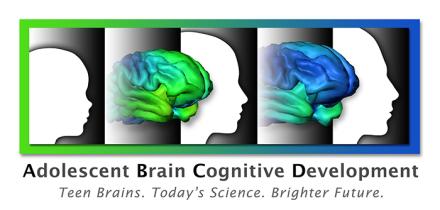Today, NIH launches the largest long-term study of brain development and child health in the United States. The Adolescent Brain Cognitive Development (ABCD) Study aims to recruit more than 10,000 children, beginning at ages 9-10, and follow their biological, cognitive and behavioral development for 10 years. Over the course of the next decade, scientists from 19 universities and centers across the country will use advanced brain imaging, annual physical exams, as well as psychological and behavioral assessments to take an unprecedented look at how the adolescent brain changes during this critical period of development.

Previous studies have revealed that critical shaping of the brain occurs in adolescence, which features major architectural and functional changes. Structural maturation, particularly in the frontal cortex, the brain region that is considerably larger in humans than other animals, continues throughout our teenage years and into our mid-20s. Synapses, the connections between brain cells through which information flows in the brain, are exuberantly formed in infancy and early childhood but then are pruned down in late childhood and adolescence to create a more efficient network of connections. As a result, the volume of brain circuitry called gray matter decreases. Meanwhile, the deep brain regions made up of the connecting wires (axons) between brain regions, so-called white matter, increase in volume. There are also major changes in brain chemistry during adolescence. This anatomical and functional reorganization of brain circuitry is thought to underlie the profound emotional and cognitive changes that occur in adolescence.
Even with this body of research, we know very little about the ways in which events that occur during adolescence affect the developing brain and influence a young person’s path toward adulthood. The data acquired in the ABCD study will enable scientists to establish standards of normal brain development (similar to what currently exists for height, weight, etc.) as well as the study of numerous facets of adolescent brain, cognitive, social, emotional, and physical development. The ABCD study will provide a treasure trove of data on how various events, experiences and exposures, affect the growing brain during this vulnerable period. The ultimate goal is to identify those factors that influence young people’s ability to successfully navigate this protracted and challenging phase in their lives. As this goal is shared by our country’s teachers, educators are key partners with scientists in the ABCD study. In addition, NIH will partner with the Division of Adolescence and School Health at the Centers for Disease Control and Prevention.
Due to the size and scope of the study, a number of NIH Institutes and Centers will participate, along with NINDS. The ABCD study is led by the National Institute on Drug Abuse, the National Institute on Alcohol Abuse and Alcoholism, with participation by the National Cancer Institute, the Eunice Kennedy Shriver National Institute of Child Health and Human Development, the National Institute of Mental Health, the National Institute on Minority Health and Health Disparities and the Office of Behavioral and Social Sciences Research. The mission of each of these NIH Institutes will be advanced by the knowledge gained from the ABCD study. NINDS is particularly interested to learn more about youth concussions, including the relationship between the number of hits to the head and the intensity of impact with long-term effects on the brain and behavior.
The ABCD Study will provide scientifically supported, evidence-based answers to many questions that parents, healthcare providers, teachers and researchers ask themselves every day. The findings from this groundbreaking study will help guide future educational policies, public health interventions and research priorities. Ultimately, the ABCD study may help researchers and physicians better understand and predict developmental problems caused by traumatic events like concussion, and institute better strategies to ensure healthy brain development during adolescence.
The mission of NINDS is to seek fundamental knowledge about the brain and nervous system and to use that knowledge to reduce the burden of neurological disease — for all age groups, including children. NINDS is excited to be a part of the innovative and trailblazing ABCD Study.
For more information about this important study, including how to participate, please visit: www.abcdstudy.org .
